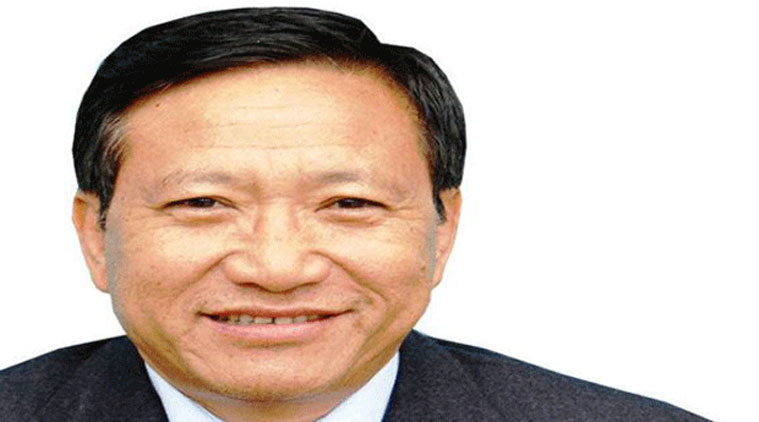Stay updated with the latest - Click here to follow us on Instagram
Survivor T R Zeliang smothers all dissent, stumps Congress, BJP
BJP insiders say that among those Zeliang sold the idea of an “all-party” government to was party president Amit Shah, during his visit to Kohima on April 18.
 T R Zeliang
T R Zeliang
The virtual collapse of the Congress in Nagaland was engineered by Chief Minister T R Zeliang and Naga People’s Front (NPF) president Shurhozelie Liezietsu in just three months.
In the process, Zeliang, who became CM less than a year ago, has also silenced his detractors, particularly predecessor Neiphiu Rio.
The latter, who had quit as CM in 2014 to go to the Lok Sabha, had personally chosen Zeliang as his successor. As Zeliang came into his own, he increasingly faced resistance from Rio’s men.
[related-post]
The Friday’s merger that, in an unexpected scenario, brought the Congress and BJP together in a coalition, was the result of this dissidence.
With only 16 of the 38 legislators of his NPF with him, Zeliang had sought support of the Congress though the BJP has been a part of the ruling Democratic Alliance of Nagaland (DAN) for 12 years now. The DAN has 52 MLAs in the 60-member House, the Congress 8. Zeliang floated the idea of an “all-party” government to make this Congress-BJP combination possible, once or twice even dubbing it a “party-less” government.
BJP insiders say that among those Zeliang sold the idea of an “all-party” government to was party president Amit Shah, during his visit to Kohima on April 18. But Shah did not agree, apparently as the BJP saw in the swelling dissident ranks a chance to topple Zeliang himself.
The 63-year-old has long been trying to emerge from Rio’s shadow. At one time, both were in the Congress, and colleagues in S C Jamir’s government. In 2002, Rio quit the Congress to join the NPF, the main opposition party. Soon after, he floated DAN with the BJP and other opposition parties, and defeated the Congress to become the CM.
While Zeliang too quit the Congress, he formed instead the Nagaland Congress with six MLAs, that later merged with the NPF. Zeliang had a one-term stint in the Rajya Sabha before joining the Rio ministry. He was handpicked by Rio to replace him when he moved to the Centre hoping to become a Union minister.
It was after that wish didn’t materialise that troubles between Zeliang and Rio picked up. Under allegedly Rio’s instigation, a group of NPF legislators put pressure on Zeliang. Modi’s visit to the state too was used by the detractors to target Zeliang.
At the height of the dissident revolt in January-February, Zeliang openly criticised Rio, saying that instead of working for the people as an MP, he was playing dirty tricks.
Still, though Congress MLAs had supported Zeliang during the trust vote of February 5, few anticipated the CM’s masterstroke in getting the party to join his government.
As recently as May 6, newly appointed NPCC president K Therie had asserted that the Congress would under no circumstance become part of Zeliang’s DAN. The AICC had also given a clear directive to the PCC not to associate with DAN because it has the BJP in it.
Though the AICC has suspended the Congress Legislature Party since, they will not attract action under the anti-defection law because the entire unit has crossed over. It is only a matter of time now that they sever ties with the Congress and either assume a new name or join the NPF.
Zeliang has also proved a survivor in tackling Nagaland’s militant groups. While the NPF has long been accused of having the NSCN(IM) backing, recently he said that if any formula offered by the Centre is acceptable to the Naga people, the separatist groups must also accept it. This was obviously directed at the Naga civil society, which has of late started raising its voice against underground groups.







